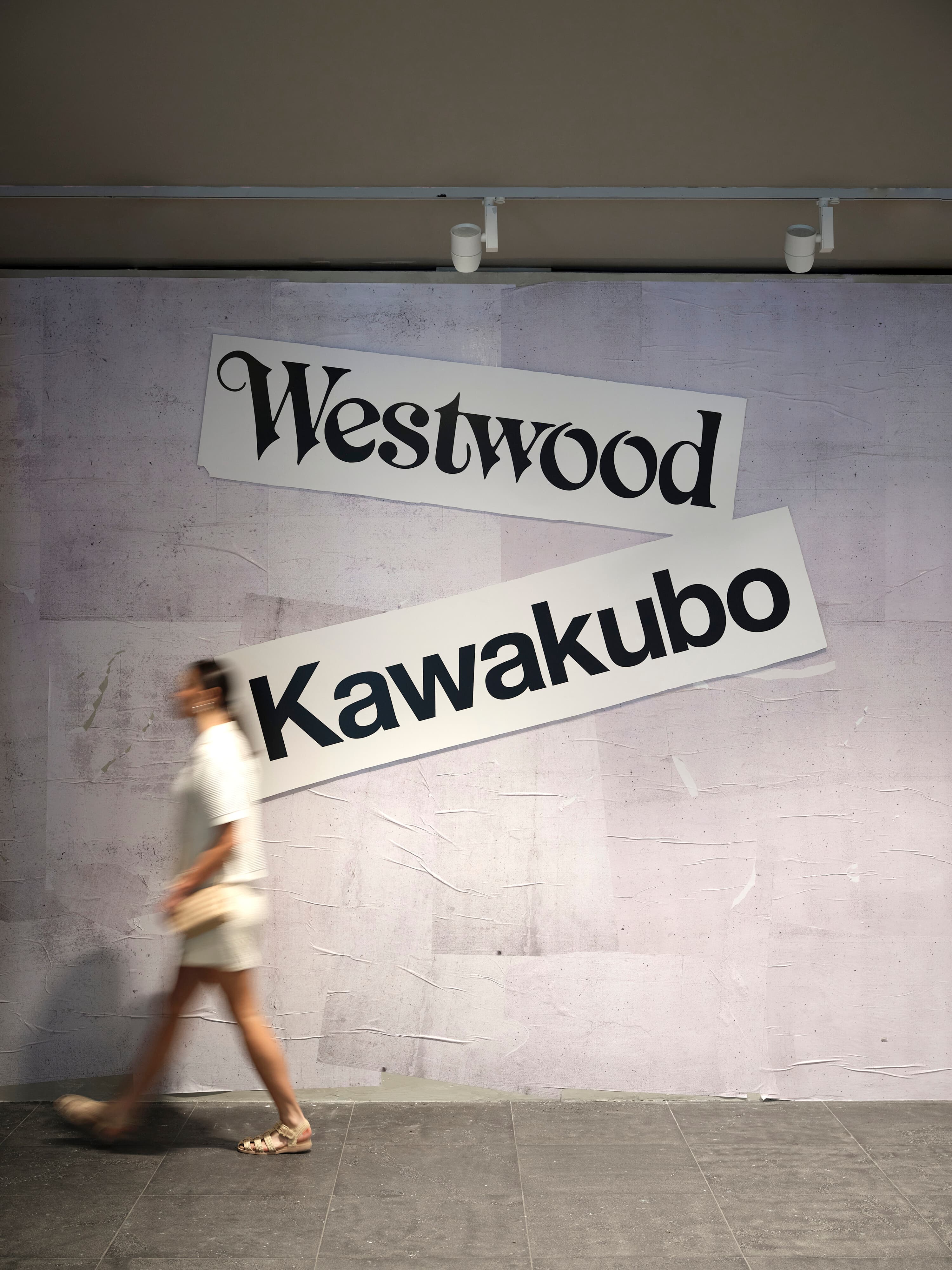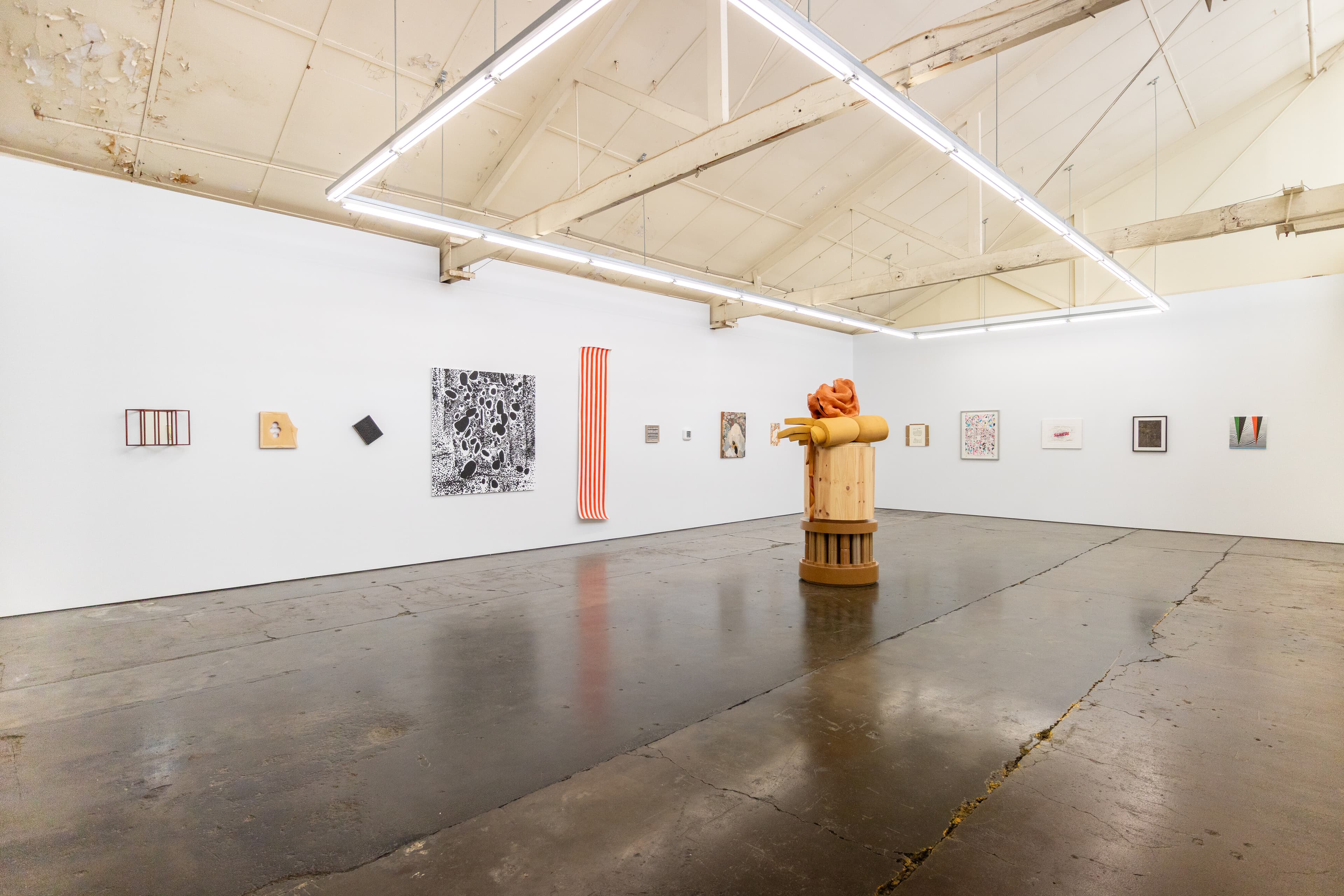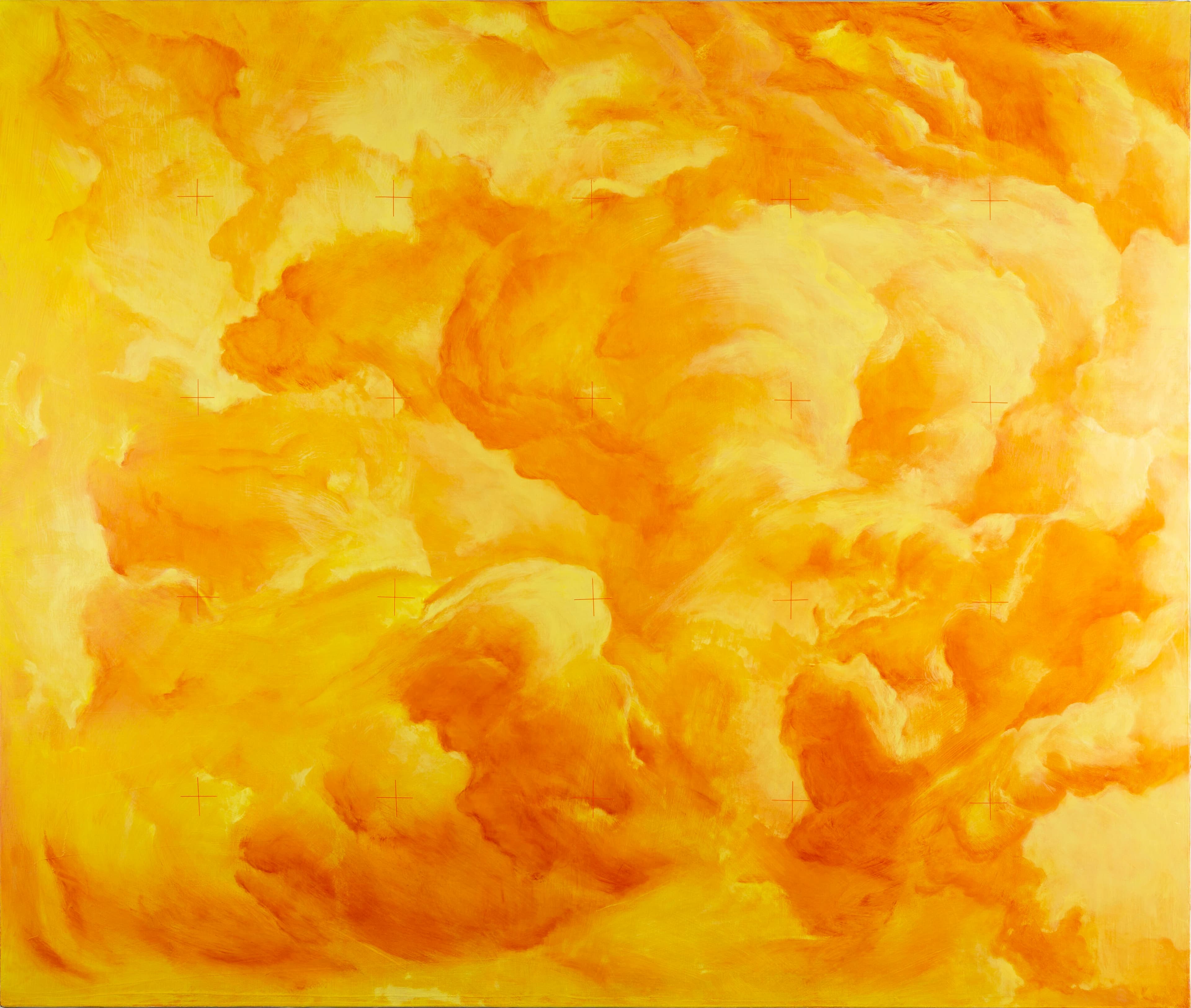Divided Subject
Sofia Skobeleva
Sophia Whitney Hewson’s sculptures stood alone behind MARS Gallery’s colossal glass windows as our collective attention was drawn to yet another lockdown. The pandemic has posed many challenges to our engagement with art. Solutions rapidly emerged, largely online. Albeit welcome, this liberalisation left an emptiness that the physical act of going to a gallery once filled. There has been a nostalgia for the tactile, an association now lost. At the earliest opportunity, I rushed to MARS eager for a cultural experience further than five kilometres from home.

It is both ironic and unfortunate that Hewson’s exhibition, Divided Subject, which explores last year’s lockdowns and outbreaks, was itself interrupted by a state-wide quarantine in June. From the outside, it is hard to judge how light-soaked the main gallery is; its pristine white walls radiate the beaming light of the street. For a couple of weeks, Hewson’s bronze sculptures sat there in stark contrast to this backdrop, seen only by peering passers-by.
Two sculptures, one of a kiss (Untitled, 2020–2021) and the other a sleeping bust (Untitled, 2020–2021), occupied the front plane; the statue of an embrace (Untitled, 2020-2021) stood to the left, and a two-level installation work spread across the centre of the floor. Downstairs three oil paintings remained invisible to the passing audience. Luckily, the show reopened in late June with a few weeks added to the program.
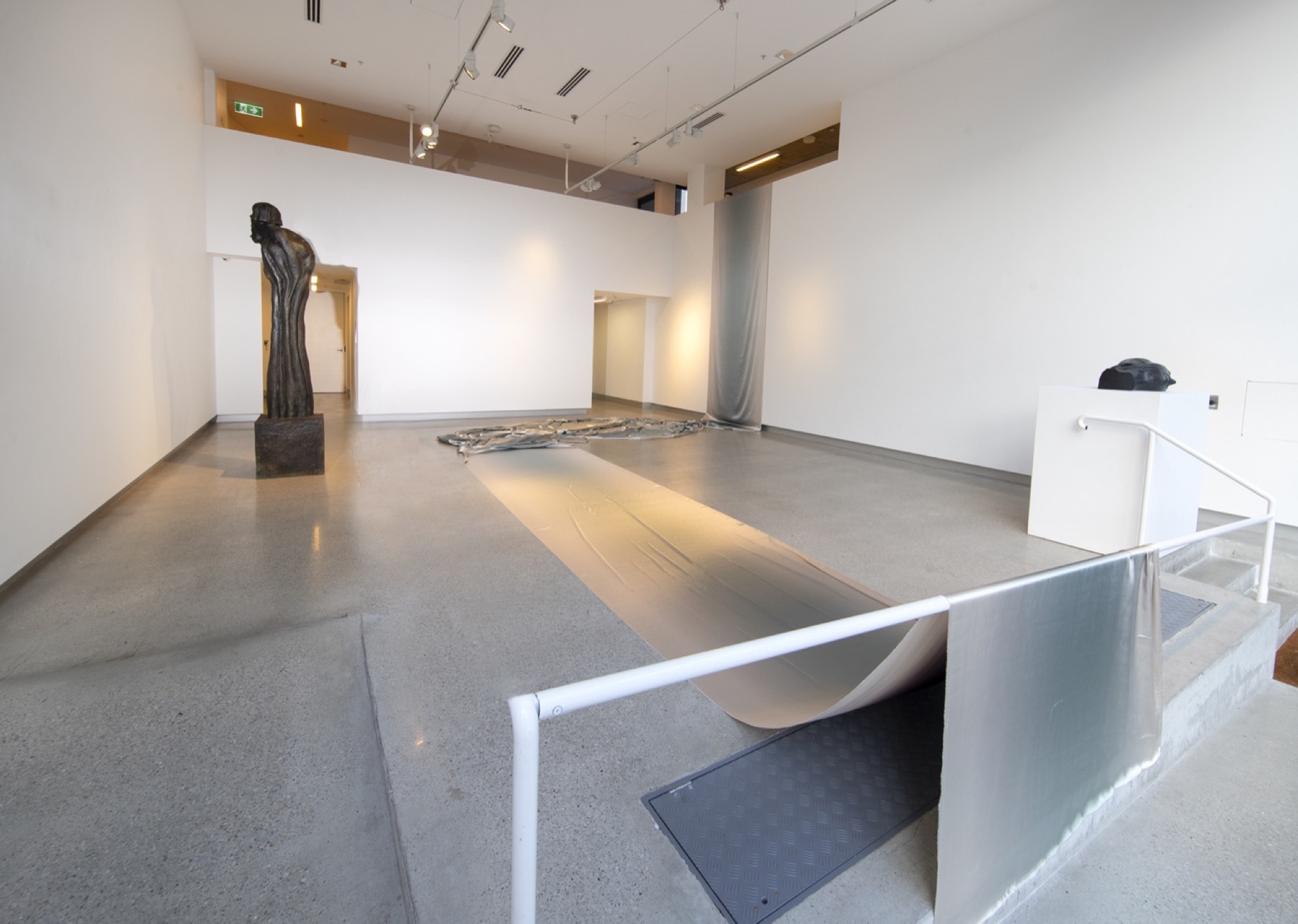
Entering the exhibition space, we encounter a large open area of the gallery occupied by a silvery silk fabric deliberately running from the centre of the gallery up to the balustrade on the first floor. The shimmering light blue-grey cloth is scrunched up in certain sections¬, suggesting a passage from clarity to tumult and then to a resurrection in a higher state of being. The silk’s blue has an emotive association with the natural world. Its simple magic reminded me of the desert sky in James Turrell’s Arrowhead (2019). Against the solid bronzes, the silk creates a softening effect. Like a body of water, it unifies the individual pieces in a whole, pushing us to consider the works in their unity. As the material flows amidst the concrete sculptures, an intersection between the conscious (concrete) and the subconscious (imaginary) emerges.
Nappies and kid’s drawings, placed along the silken stream, build on the theme of an unconscious eruption and motherhood. Hewson continues the legacy of works, such as Mary Kelly’s Post-Partum Document (1973–79), which investigate the relationship of mother and child. A primal theme in art history, these relics of infancy build on the Lacanian theory of the self-actualisation of the child, following separation from the mother. This is the moment when conscious life begins, and unconscious desires start to permeate. The depiction of a child at play in Hewson’s oil painting reinforces the inception of a human ego and its internal psychosis as a dominant theme in the show.

Unlike statues exhibited in large museums or public places, the works in Divided Subject possess a certain equilibrium not only within the primary gallery space but also in their subject-matter. A bust of a sleeping female figure sits on a plinth opposite the door. A symbol of the feminine fatigued by patriarchy, it also reflects the torpor of lockdowns. A light cloth or hair fall on one side of its face. The statue is restful, horizontal, in hibernation.
Further down in the gallery, a sculpture of two figures embracing stands more than two metres tall. Enfolding one another, their lower torsos are merged into one tall trunk as if a tree. Their faces are turned to the left-side wall of the gallery, concealed from the viewer. A dried-up tree branch placed at the bottom of the plinth indicates a familial nest. Their strongly arched backs appear burdened by a responsibility for survival.
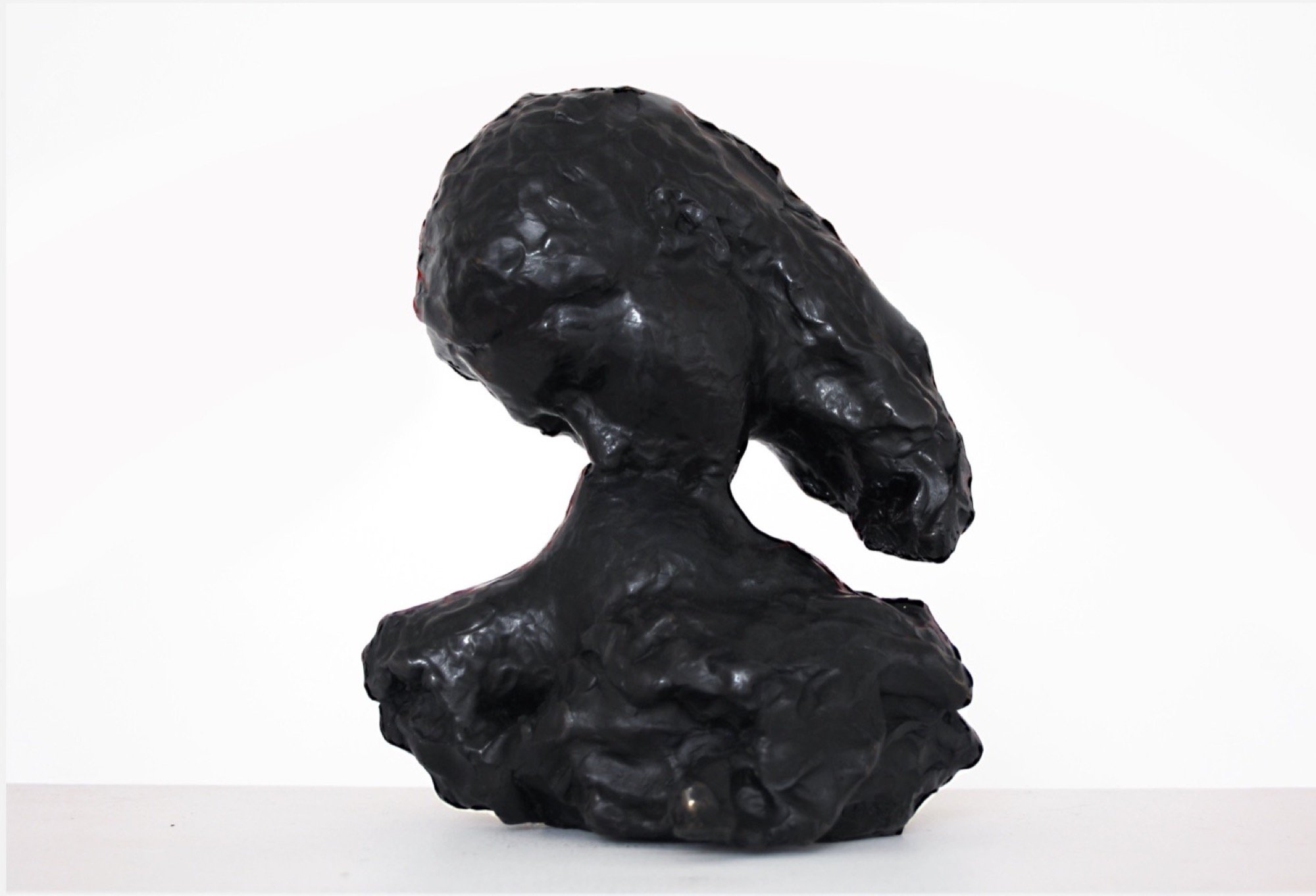
At the front of the gallery, a depiction of a kiss builds on the theme of intimacy, this time echoing Auguste Rodin’s The Kiss (1882). In Untitled (2020–2021), Hewson follows Rodin’s depiction of incarnate human experience of passion and love. But in contrast, Hewson shows the female figure on top, giving it agency and power. This immortalisation of love further contributes to the theme of survival and procreation. It explores the eros of grief. In a time characterised by suffering and loss, humanity has turned inward to focus on the domestic sphere, further contributing to the dissonance between the conscious and the subconscious.

A final sculpture of three figures entangled in a fight is positioned near the stairs leading down to Hewson’s paintings. Untitled (2020–2021) depicts one figure pulling another by her hair with a third, headless figure caught in between them. The struggle of last year once again springs to mind—ideological pulls, political disagreements and personal choices. Smallest in size, the sculpture’s subject-matter is heavy. Seen against the artist’s personal experience of domestic violence and her work as a social worker at a women’s refuge, this sculpture most prominently shows the result of an unconscious eruption. It is charged with a sublimity and incarnate psychosis that gives this work electricity.
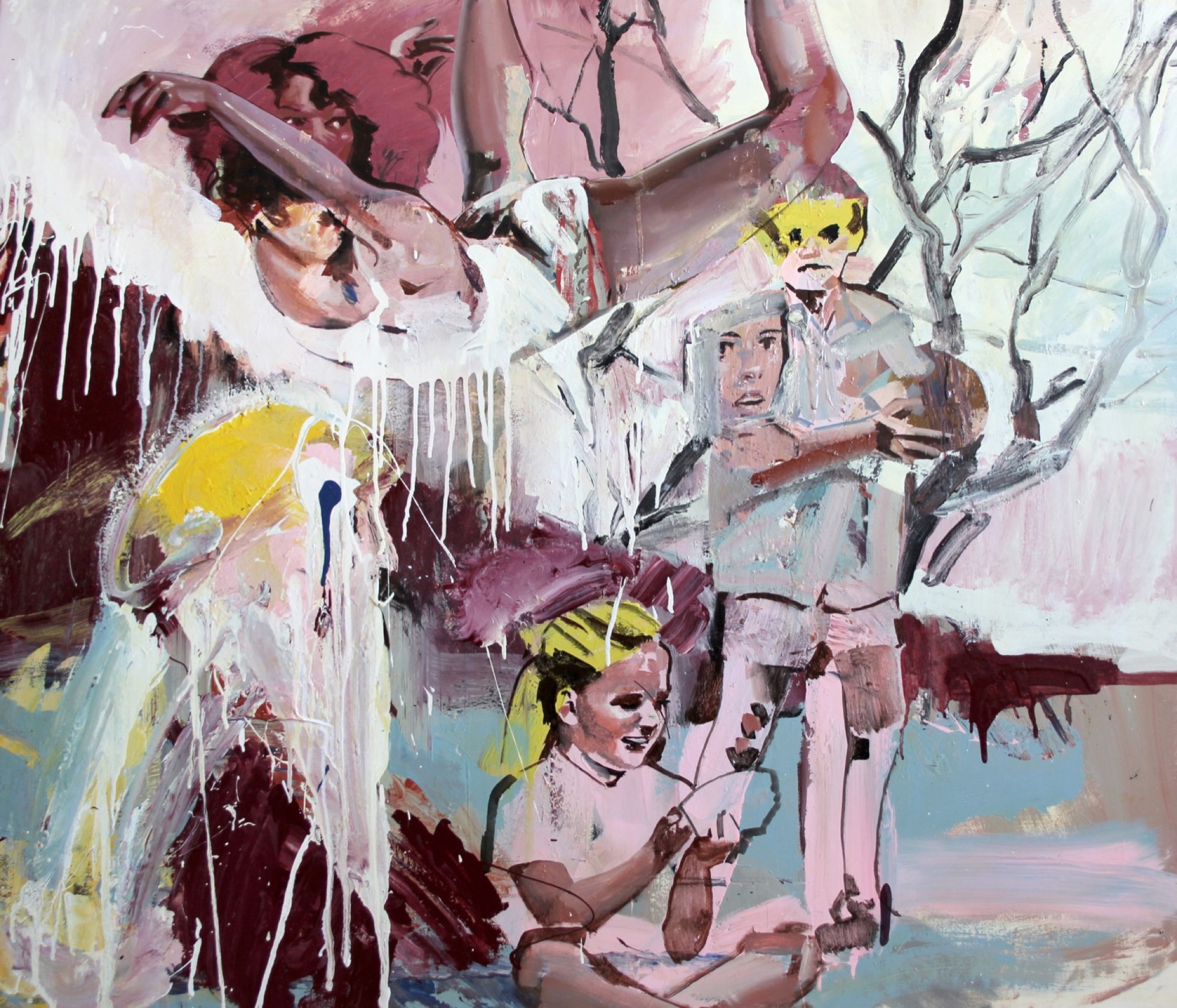
Located in the downstairs basement, the three paintings are insistently separate from the rest of the show. They are spot lit across three walls of a tiny dark room. The paintings depict children at play, positioned amongst dynamic colour and heavy brushstrokes. The action is interrupted only by the barren trees growing around them. The branches’ dark hues suggest a degree of menace in contrast to the vibrant blues, yellows and pinks. In two of the paintings, Hewson depicts female figures in suspense, either falling or travelling in time—signalling a loss of control or a journey into memory. These works culminate with a centrepiece that depicts a nebulous featureless child, contoured by jutting calamitous tree trunks.
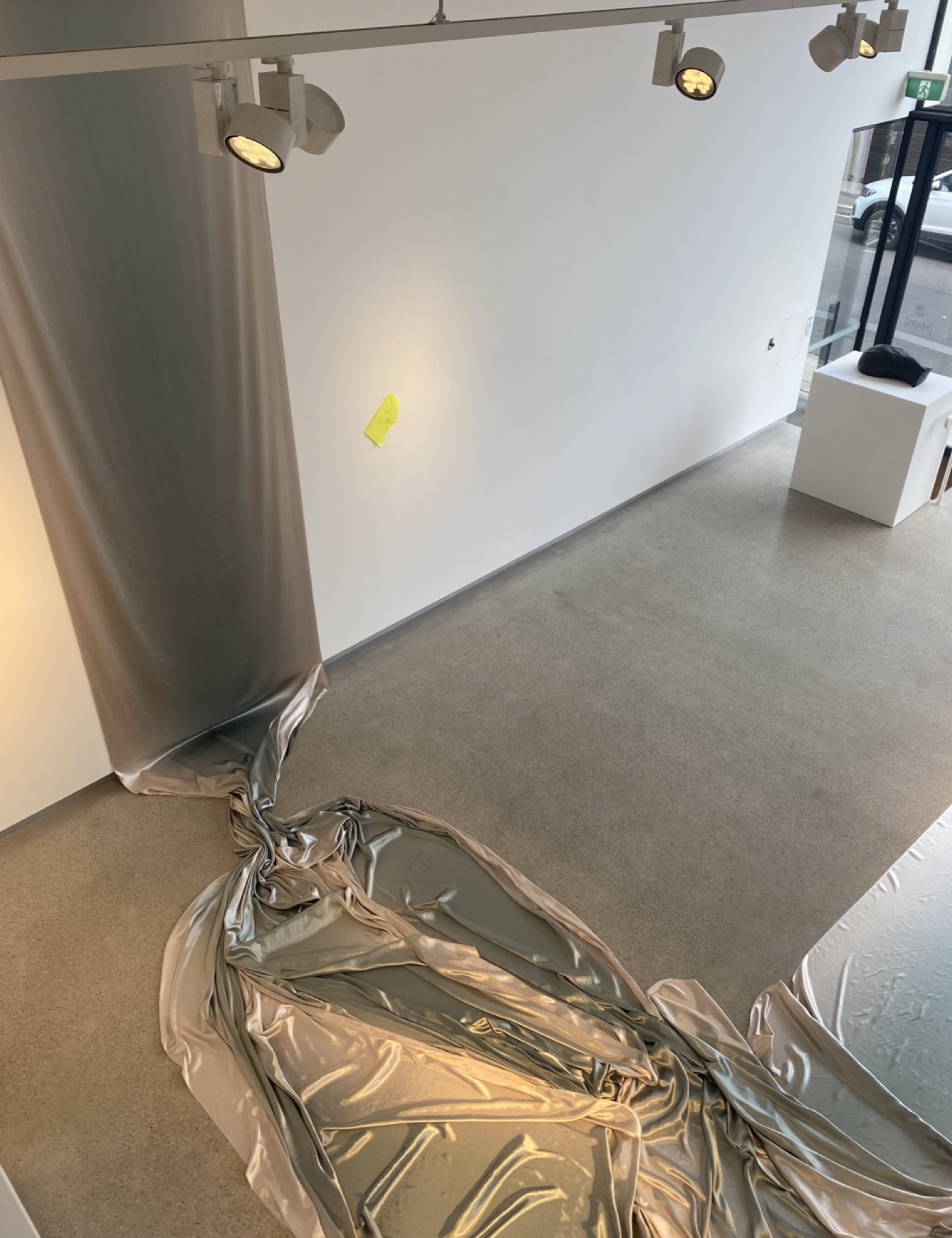
What attracts me to Sophia Whitney Hewson, beyond the jeu de mots in her name, is the mystifying balance in her work between the personal and the universal. The show derives its title from the notion of a “sudden unconscious eruption”, perhaps emerging from Hewson’s psychoanalytic training at the Australian Centre for Psychoanalysis. The Centre mainly teaches Lacanian psychoanalysis, which—like most of the discipline—investigates the construction of the self in relation to the social. Last year’s collective experience of a global crisis offers a useful backdrop against which to analyse the subconscious desires that emerge in our often-termed unprecedented times.
There is also a crossover with the work of Tracey Emin that is difficult to disregard. Hewson’s work possesses that same raw charge and political reactivity, while also retaining a simplicity and accessibility. Both artists operate in situ; located in an Anglo-puritanical context, they reinterpret commonplace subject-matter, addressing personal-political concerns. Hewson’s other works include the artist infiltrating the cult religious group, The Fundamentalist Church of Jesus Christ of Latter-Day Saints, in Utah; taking temazepam to sleep in a gallery for the duration of an exhibition; filming herself having sex with a stranger in New York; and following a pornography photographer and actor, Ron Jeremy, around Los Angeles.

There is also a co-existence of conservatism and rebelliousness in both Hewson’s and Emin’s work. Both adopt a larger-than-life persona, tune-in to their egos and do not shy away from using traditional art mediums to make salient statements. In Divided Subject, Hewson not only works with painting but also bronze, a durable prehistoric human-made material. In Analysis 11, Hewson resorts to stitching, which was traditionally considered to be a women’s craft to talk about female oppression through her personal life. The exposition of vulnerability as a source of empowerment, commonly and didactically labelled “confessional”, are a common method used by the female artists. When done well, I like it.
At once personal and social, Hewson’s works successfully capture the shared circumstances that we found ourselves in last year: the far-near intimacy, the grief, digital connections and emotional disconnect, along with a myriad of other polarising factors. Globally, society witnessed the inequalities between the global South and North, democracies and autocracies. The relentless social media coverage of violence blurred the lines between the personal and the public. In this upheaval, I would contend the good of humanity emerged to neutralise the bad. In Divided Subject, Hewson navigates these dichotomies of the human experience though a nuanced body of work that analyses the personal but never for want of a universal matter.
Sofia Skobeleva/ Sid Akhmed is a writer. She holds a BA in Art History and a Juris Doctor from the University of Melbourne. Her interests include interdisciplinary art practices, poetry and dance. She has written for Performance Review and published the zine Cuntalope.
